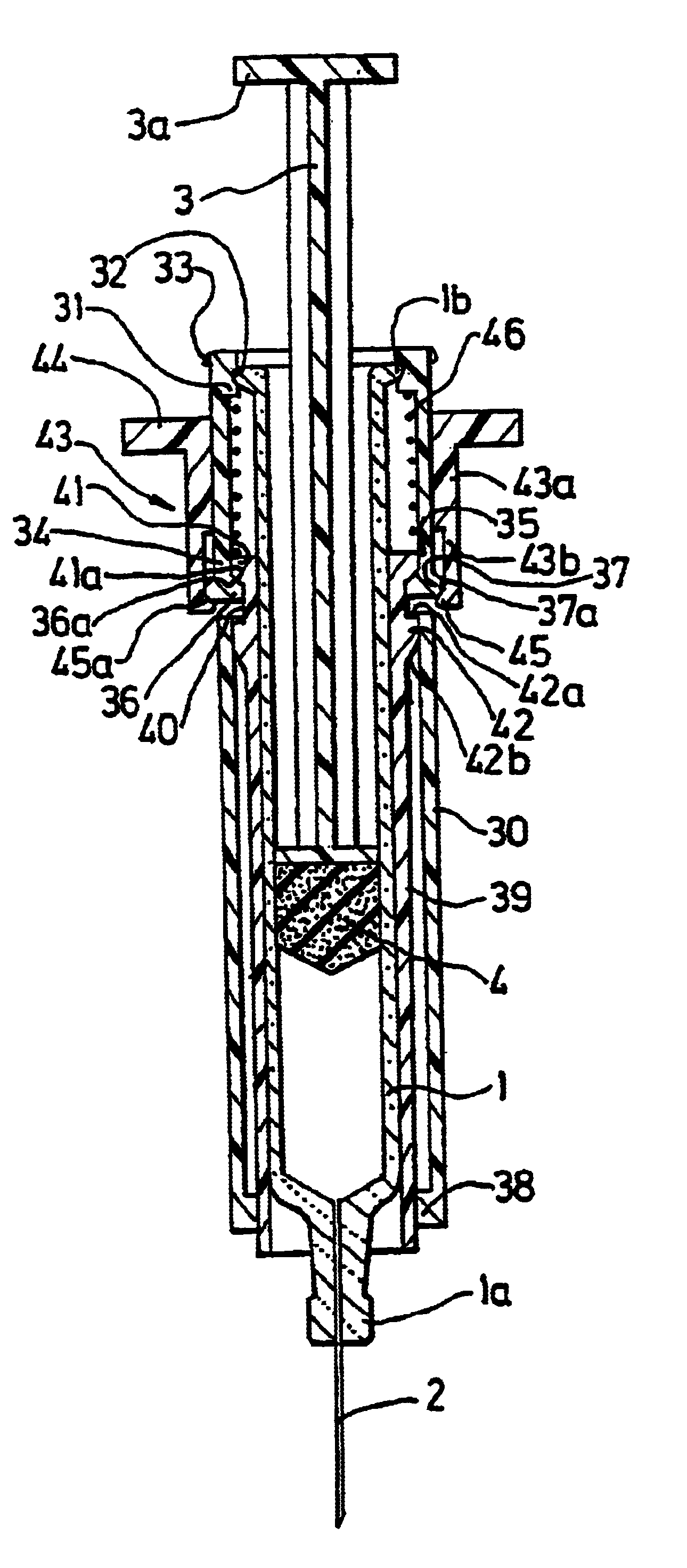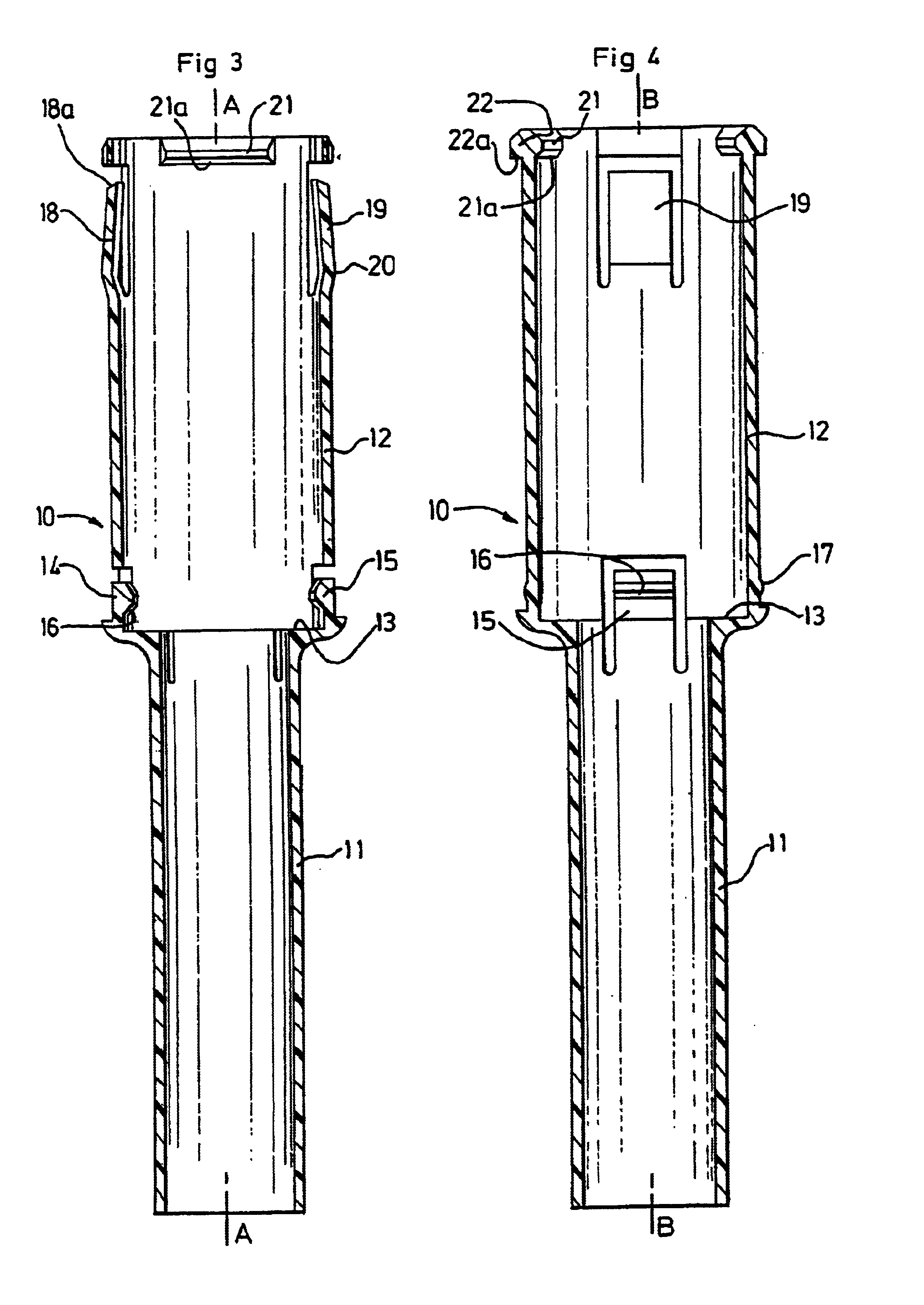Disposable injection device
a single-use injection and injection device technology, applied in the direction of intravenous devices, ampoule syringes, infusion needles, etc., can solve the problems of increased production costs on an industrial scale which are relatively low in comparison with the production cost of a conventional pre-filled syringe without protection, and the injection device of this type does not provide absolute safety for its user
- Summary
- Abstract
- Description
- Claims
- Application Information
AI Technical Summary
Benefits of technology
Problems solved by technology
Method used
Image
Examples
Embodiment Construction
[0061]The injection devices according to the invention, represented respectively in FIGS. 1, 2 and 7, 8, both comprise firstly a pre-filled syringe 1 of a conventional type, which for example is made of glass, comprising in a conventional manner a front nose 1a, on which there is, fitted a needle 2, and a collar 1b at the level of its rear end.
[0062]This syringe 1 also comprises in a conventional manner a plunger rod 3, which is provided with a thruster 3a at the level of its rear end, and activates a plunger 4 which is integral with its front end.
[0063]The injection device represented in FIGS. 1 and 2 additionally comprises a syringe body, which is designed to be rendered integral with the syringe 1, and consists of a tubular ring 5, which is represented in detail in FIG. 5.
[0064]This tubular ring 5 comprises firstly a rear end portion 6 with a frusto-conical shape, forming a ramp which allows it to pass over the collar 1b of the syringe 1, and, juxtaposed with the said frusto-coni...
PUM
 Login to View More
Login to View More Abstract
Description
Claims
Application Information
 Login to View More
Login to View More - R&D
- Intellectual Property
- Life Sciences
- Materials
- Tech Scout
- Unparalleled Data Quality
- Higher Quality Content
- 60% Fewer Hallucinations
Browse by: Latest US Patents, China's latest patents, Technical Efficacy Thesaurus, Application Domain, Technology Topic, Popular Technical Reports.
© 2025 PatSnap. All rights reserved.Legal|Privacy policy|Modern Slavery Act Transparency Statement|Sitemap|About US| Contact US: help@patsnap.com



